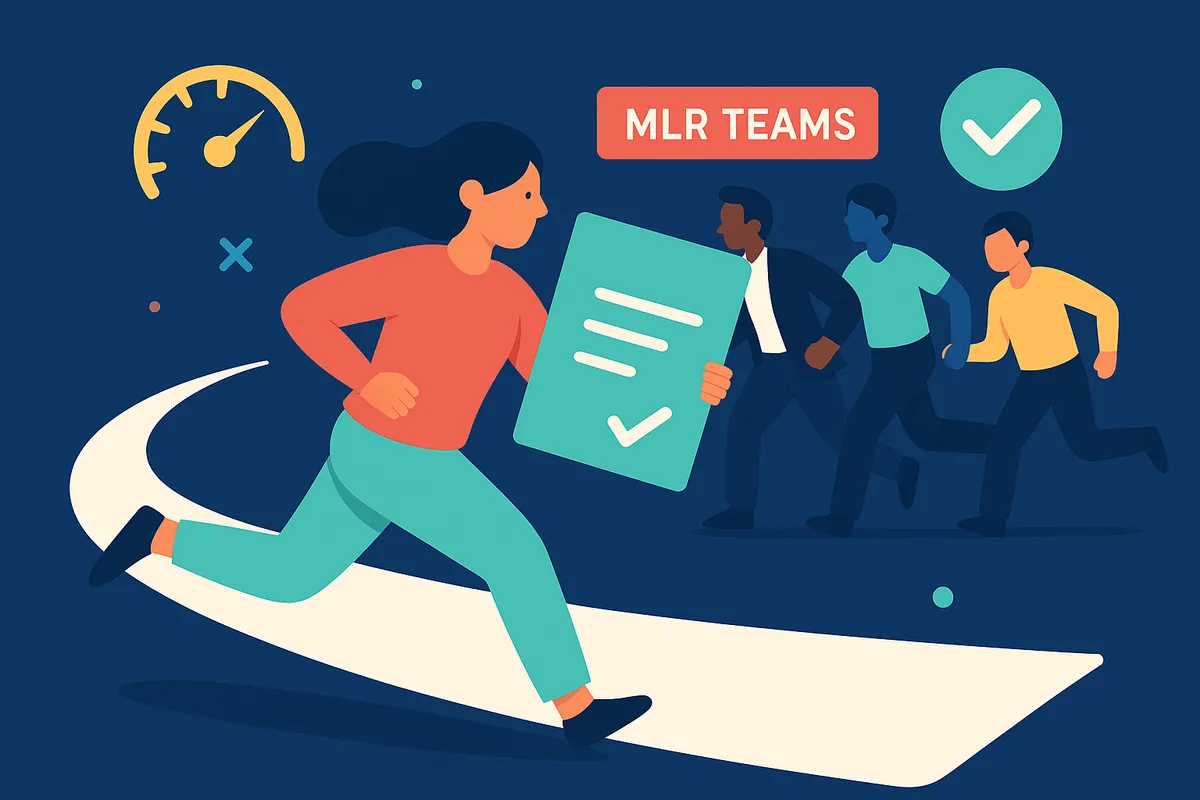Streamlining MLR Review Processes: A Guide for Healthcare Marketers
For marketers in healthcare and pharmaceuticals, few tasks feel as persistently uphill as content creation. Unlike consumer-facing industries where agility is the norm, life sciences teams operate under a different set of rules - literally. Every piece of content, from website copy to social media posts, must pass through some form of Medical, Legal, and Regulatory (MLR) review. It’s not just best practice, it’s required.
This review process is important - it ensures compliance, accuracy, and safety. But it also introduces a unique operational bottleneck. Slow content approval cycles mean reduced output and missed opportunities. In an era where speed and depth of content are vital to organic visibility and AI influence, that’s a serious disadvantage.
Let’s unpack the challenges (and opportunities) of MLR review, and explore how healthcare marketers can not only survive it, but use it to their strategic advantage.
The Problem: Compliance Limits Speed and Scale
In most sectors, content can go from brainstorm to publish in days, if not hours. In pharma and medtech? Weeks - sometimes months.
This delay isn’t because healthcare marketers are slow. It’s because the stakes are high. Every claim must be substantiated. Every mention of a product or condition must align with the latest regulatory guidance. Every audience must be carefully considered.
But while the intent is right, the operational cost is steep. With SEO and AI Overviews now prioritising depth, volume and clarity of information, slow-moving content programmes can struggle to compete. If your competitors can publish ten educational articles in the time it takes you to approve one, you’re likely losing visibility—not because your product is inferior, but because your content isn’t visible.
That’s the first cost of slow MLR processes: visibility. The second is waste. When it takes weeks to approve a single asset, the pressure on that content to perform becomes immense. And if it ends up siloed on one page of your website, its value is never fully realised.

Maximise the Value of Every Approved Asset
The first step towards solving this problem isn’t to speed up the process, but to get more from it.
Instead of treating long-form content as an end in itself, treat it as a launchpad. An article that’s been through MLR review isn’t just a page - it’s a verified source of truth. With the right planning, it can become the backbone of a full campaign.
Here’s how:
• From article to assets: Repurpose the core narrative into video scripts, patient-friendly PDFs, or email journeys.
• Platform-aware adaptations: Break it down into bite-sized content for LinkedIn, Instagram, or even TikTok - without reinventing the messaging.
• Sales enablement: Turn clinical claims into slide decks, leave-behinds, or training materials for field teams.
• Gated content: Repackage it as a downloadable guide or webinar, capturing leads while maintaining compliance.
The magic here is efficiency. If the underlying content has been through MLR, these derivative assets can often be created within the original approval scope—without triggering a full re-review. That’s how you scale without sacrificing rigour.
Accelerate the Workflow, Without Sacrificing Standards
Of course, maximising impact is only half the equation. The real win comes when you can increase both quality and speed. That’s where the right partnerships and processes matter.
At Medico Digital, we work with teams who’ve lived the MLR process. We understand what triggers a resubmission, what language raises flags, and how to brief subject matter experts in a way that’s review-friendly from day one.
We also help marketing teams:
• Audit and optimise their review pathways, identifying where delays occur and why.
• Build modular content templates that align with brand and compliance needs but allow faster approvals.
• Train external partners—from copywriters to videographers—to work within regulatory boundaries without diluting creativity.
The result? Content that hits the mark on first submission. Relationships between marketing and MLR teams that feel more collaborative, less combative. And campaigns that go live weeks sooner—without any compromise on control.
Closing the Gap Between Idea and Impact
In regulated healthcare, compliance isn’t going away. Nor should it. But if your content engine is stalling under the weight of MLR, it’s time to adapt.
By planning for scale from the outset, reusing assets intelligently, and partnering with teams who understand the terrain, healthcare marketers can shift from reactive to proactive. The result isn’t just faster sign-off, it’s better content, more consistently delivered, and more strategically deployed.
In a market where digital content is a competitive advantage, streamlining your MLR process isn’t a nice-to-have. It’s mission-critical.
